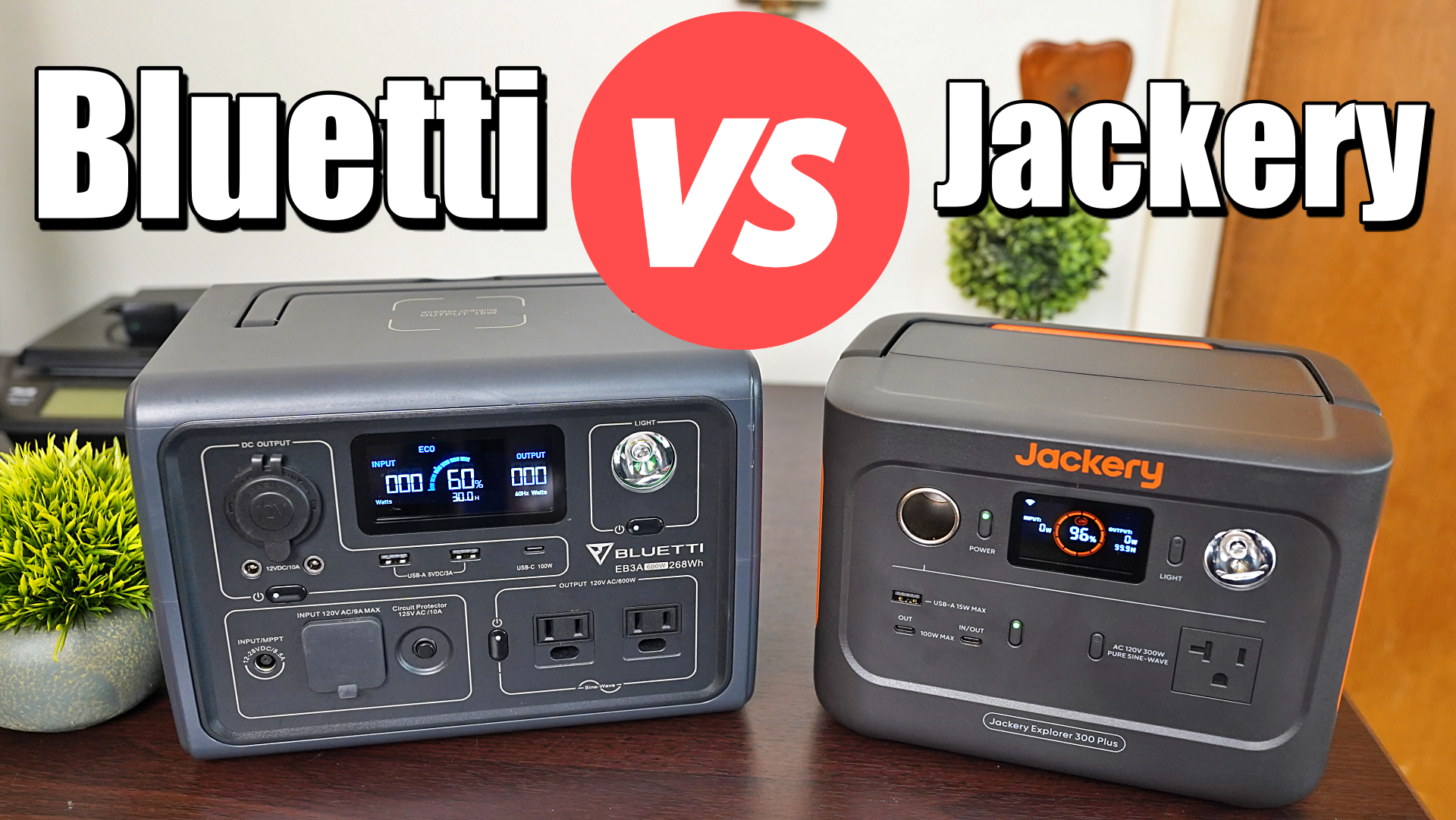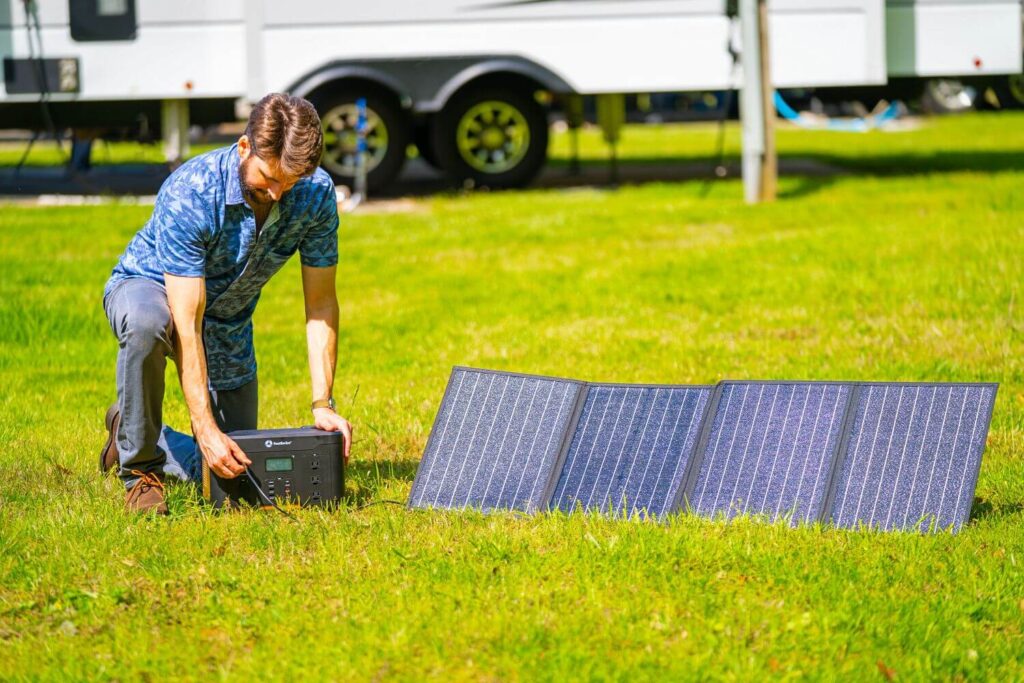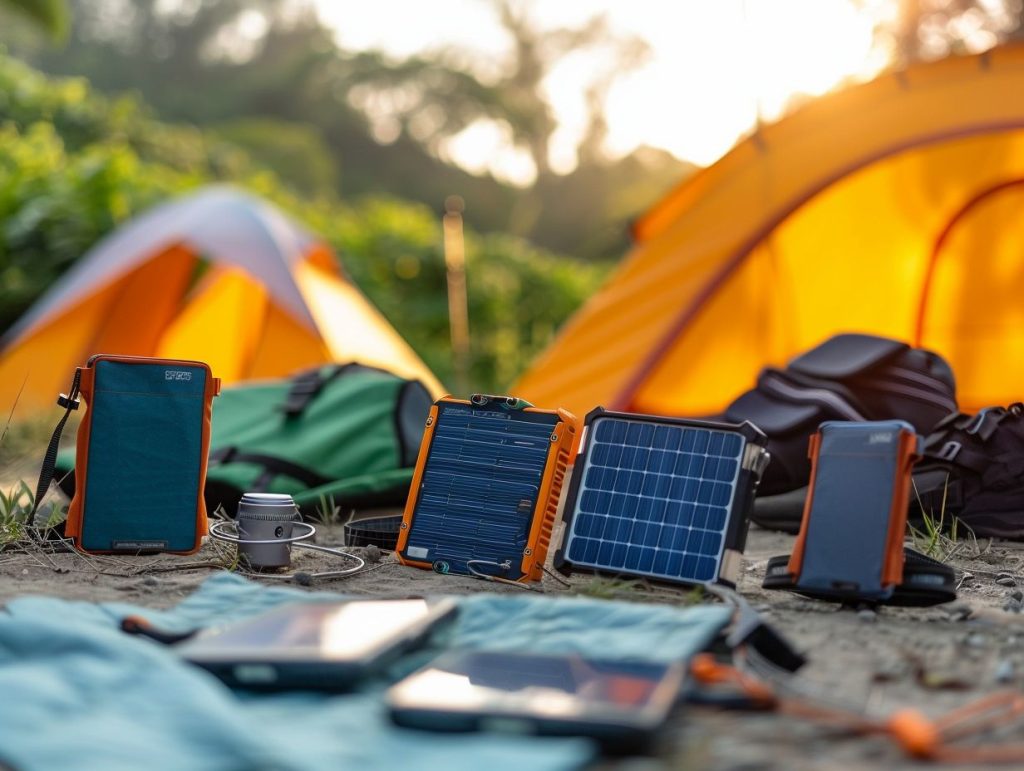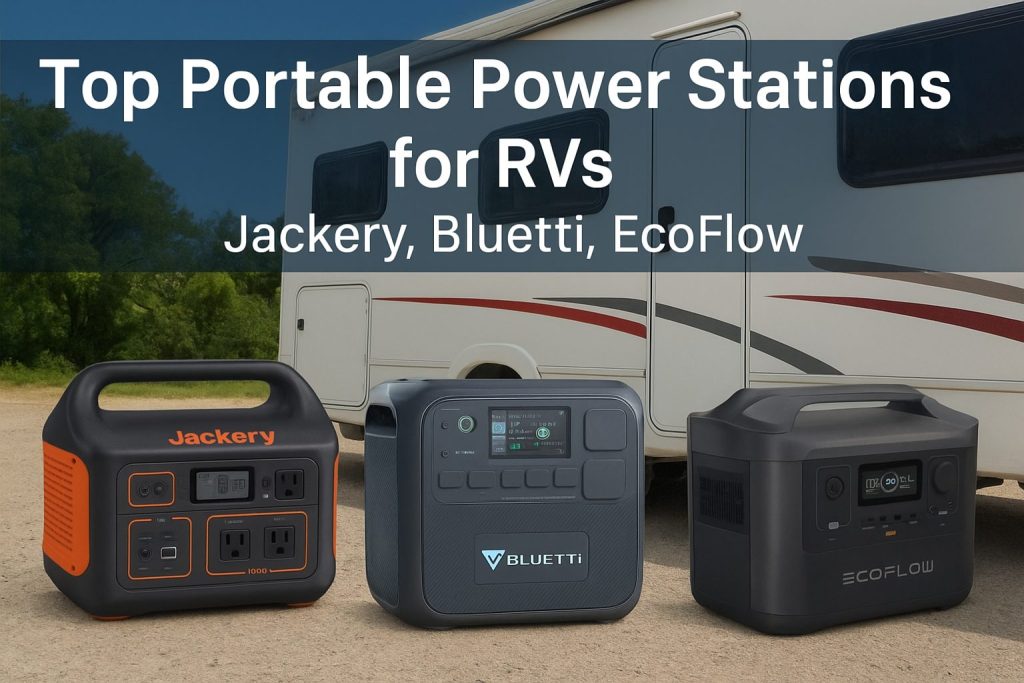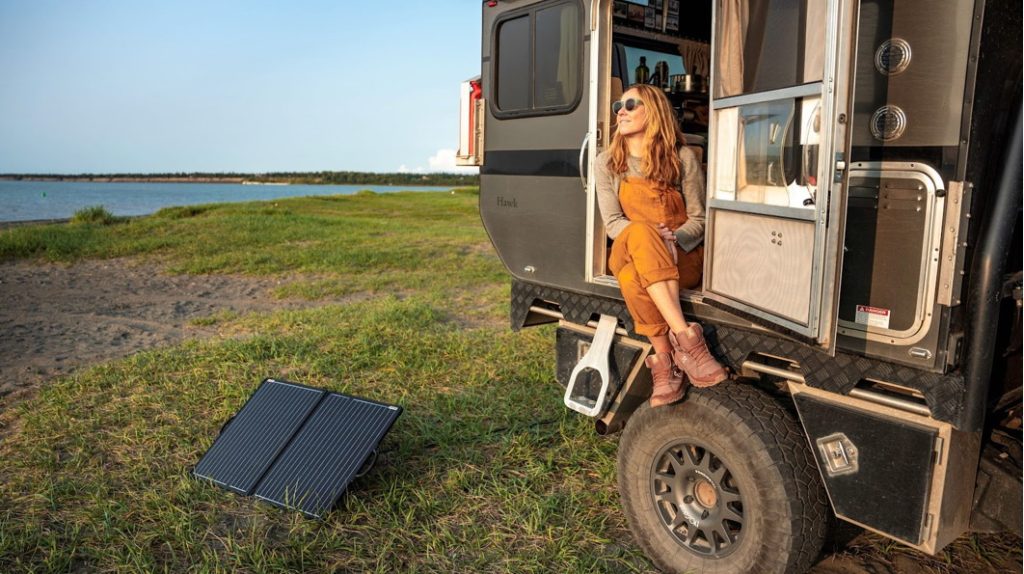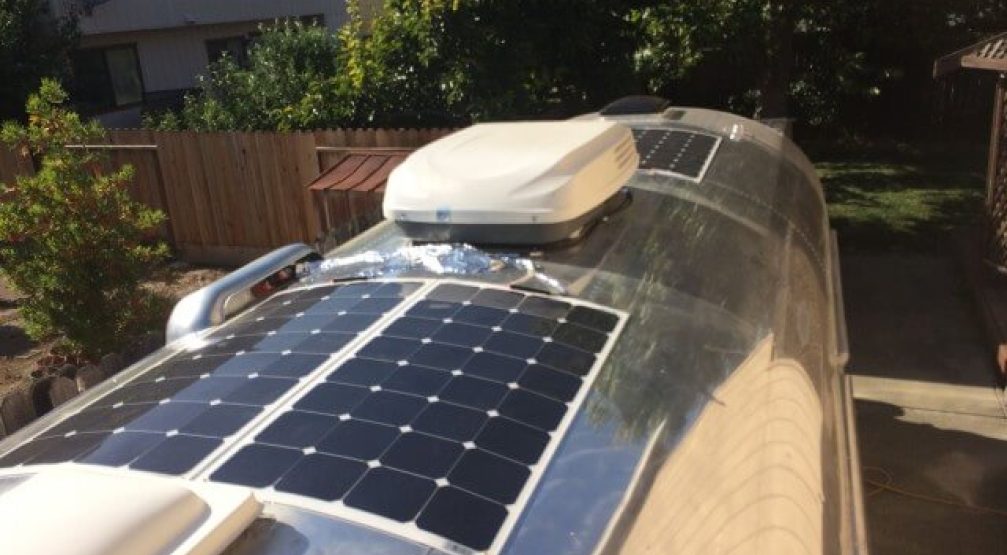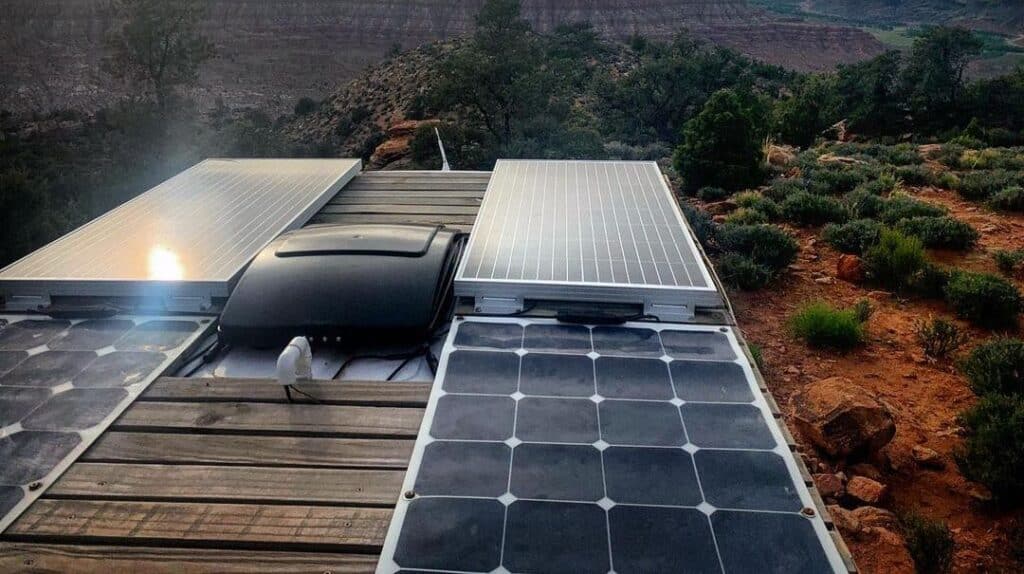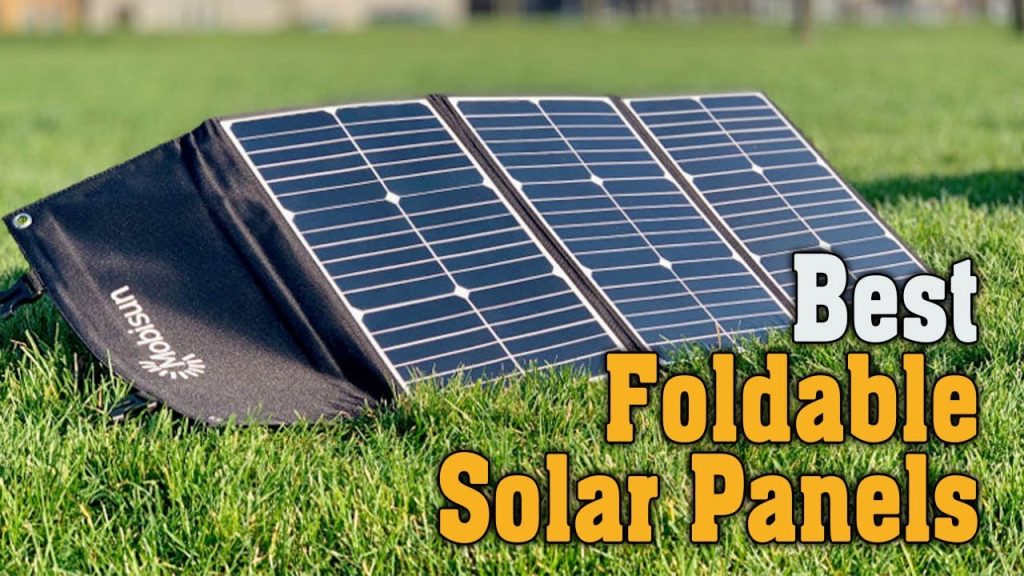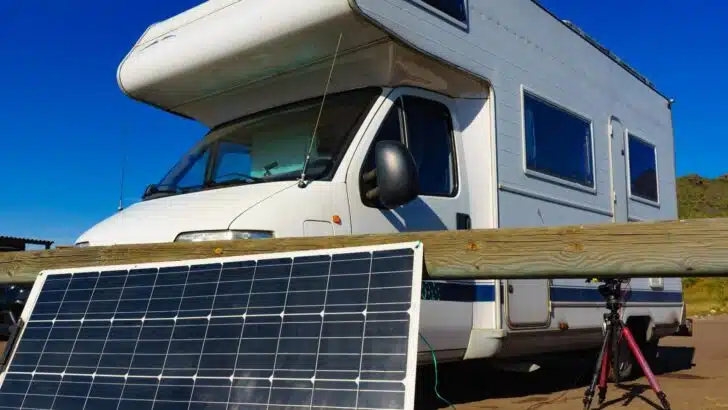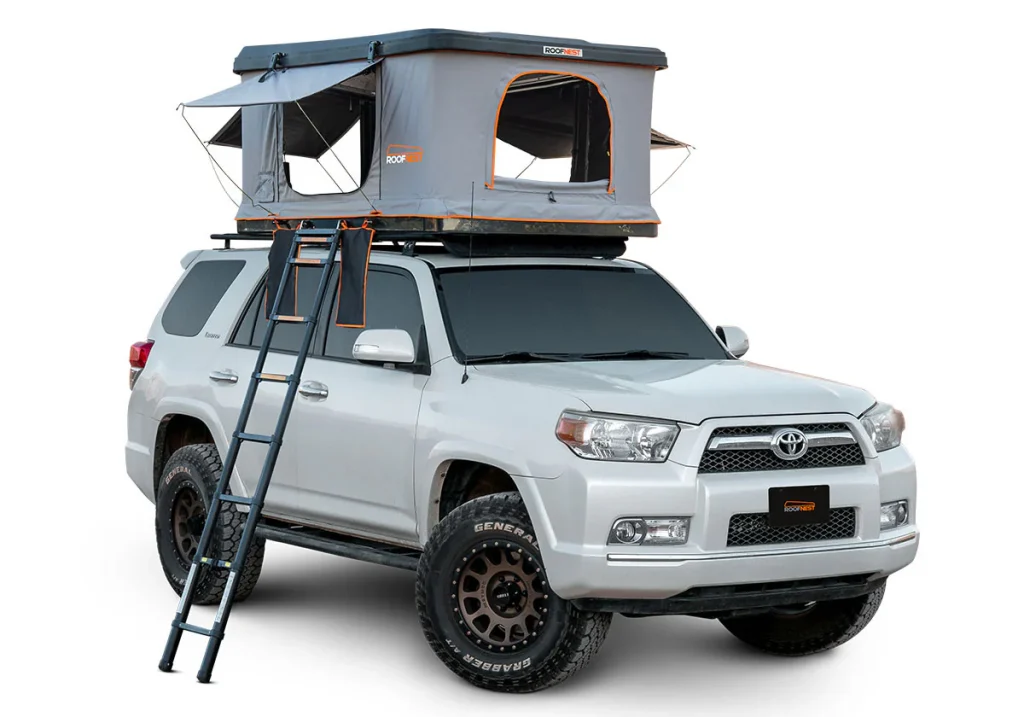When you’re miles away from the nearest power outlet, a reliable portable power station is essential for overlanding. Whether you need to charge your fridge, power a campsite, or keep your devices running, Jackery and Bluetti are two of the most trusted brands in the market. But which one is the better choice for your adventures?
Jackery is known for its compact, user-friendly designs and strong reputation in the solar generator space. Bluetti, on the other hand, focuses on high-capacity, modular systems with advanced battery technology.
Jackery Portable Power Station
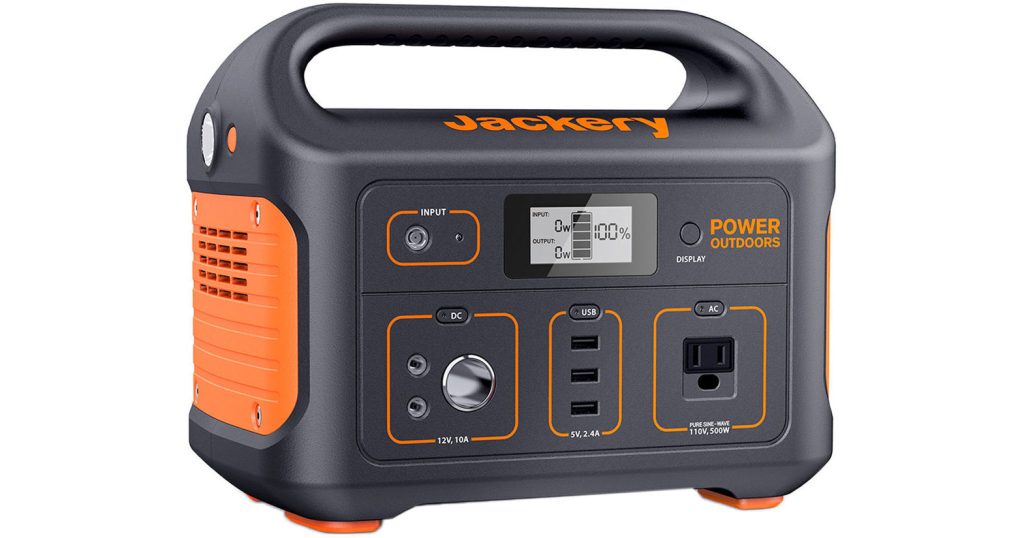
Jackery has been a pioneer in portable power stations, offering lightweight, efficient, and easy-to-use solutions for outdoor enthusiasts. Their products are popular among overlanders due to their reliability and solar compatibility.
Key Features of Jackery Power Stations:
✔ Battery Technology: Uses lithium-ion batteries, which are lightweight and efficient, though slightly less durable than LiFePO4 (used by Bluetti in some models).
✔ Power Capacity: Ranges from 240Wh (Explorer 240) to 3024Wh (Explorer 3000 Pro), catering to different needs.
✔ Solar Charging: Supports fast solar input (up to 800W on high-end models) with Jackery SolarSaga panels.
✔ Portability: Compact and lightweight (e.g., Explorer 1000 weighs just 22 lbs), making them ideal for vehicle-based travel.
✔ Output Options: Includes AC outlets, USB-C PD, USB-A, and 12V carports for versatile charging.
✔ User-Friendly Interface: Simple LCD display with clear battery and power usage info.
Best Jackery Models for Overlanding:
-
Jackery Explorer 1000 (1002Wh) – Great balance between capacity and portability.
-
Jackery Explorer 1500 (1512Wh) – More power for longer trips.
-
Jackery Explorer 3000 Pro (3024Wh) – High capacity for extended off-grid use.
Why Overlanders Choose Jackery:
✅ Easy to transport (lighter than most Bluetti models).
✅ Quick solar recharge with compatible panels.
✅ Proven reliability in outdoor conditions.
However, Jackery’s non-expandable battery (except for the 3000 Pro) and lower cycle life (~500 cycles to 80% capacity) may be drawbacks for heavy users.
Bluetti Portable Power Station
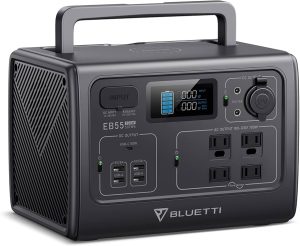
Bluetti has rapidly gained a reputation for high-capacity, modular power solutions with cutting-edge battery technology. Designed for off-grid enthusiasts who need long-lasting, expandable power, Bluetti stations are a favorite among serious overlanders and van lifers.
Key Features of Bluetti Power Stations:
✔ Battery Technology: Uses LiFePO4 (LFP) batteries in most models, offering 3,000–6,000+ charge cycles (vs. Jackery’s ~500 cycles).
✔ Modular Expandability: Many Bluetti models (like the EP500 & AC200P) support extra battery packs, doubling or tripling capacity.
✔ Power Capacity: Ranges from 200Wh (EB3A) to a massive 7,168Wh (EP900) for extreme off-grid needs.
✔ Solar Charging: Supports ultra-fast solar input (up to 1,500W+ on some models) with dual MPPT controllers for better efficiency.
✔ Output Options: Includes multiple AC outlets, USB-C PD (100W), wireless charging, and even 30A RV plugs in high-end models.
✔ Smart Features: Bluetooth/Wi-Fi app control for monitoring and settings adjustments.
Best Bluetti Models for Overlanding:
-
Bluetti EB70S (716Wh) – Compact yet powerful, great for weekend trips.
-
Bluetti AC200P (2,000Wh) – High capacity with expandability (supports B230 battery add-on).
-
Bluetti AC300 + B300 (3,072Wh, expandable to 12,288Wh) – Ultimate overlanding powerhouse.
Why Overlanders Choose Bluetti:
✅ Longer battery lifespan (2–4x more cycles than Jackery).
✅ Expandable capacity for growing energy needs.
✅ Faster solar charging with dual MPPT controllers.
✅ Higher surge power for heavy-duty appliances (e.g., air compressors).
However, Bluetti units are typically heavier and bulkier than Jackery’s (e.g., AC200P weighs 60 lbs vs. Jackery 1500’s 35 lbs), and premium models come at a higher price.
Comparison Between Jackery and Bluetti Portable Power Stations
When choosing between Jackery and Bluetti for overlanding, key differences in battery tech, design, and durability can make or break your decision. Below, we break down how these brands compare in critical categories.
Battery Technology & Longevity
Jackery: Lightweight but Limited Cycles
-
Battery Chemistry: Uses lithium-ion (NMC) in most models (e.g., Explorer 1000, 1500).
-
Cycle Life: ~500 cycles to 80% capacity (after which battery performance declines noticeably).
-
Pros:
✅ More energy-dense = lighter weight for the same capacity.
✅ Better performance in cold weather compared to LiFePO4. -
Cons:
❌ Shorter lifespan (not ideal for daily heavy use).
❌ Higher degradation over time.
Bluetti: Longevity-Focused LiFePO4
-
Battery Chemistry: Primarily LiFePO4 (LFP) (e.g., AC200P, EB70S, AC300).
-
Cycle Life: 3,000–6,000+ cycles to 80% capacity (6–10x longer than Jackery).
-
Pros:
✅ Decades of use with proper maintenance.
✅ More heat-resistant and stable (safer for high-power applications). -
Cons:
❌ Heavier than lithium-ion (e.g., Bluetti AC200P = 60 lbs vs. Jackery 1500 = 35 lbs).
❌ Slightly less efficient in freezing temperatures.
Winner for Overlanding: Bluetti (if you prioritize longevity), Jackery (if weight is critical).
Modular Design
Jackery: Simple, All-in-One Units
-
Most models (except Explorer 3000 Pro) do not support expansion.
-
Fixed capacity – You must buy a larger unit if you need more power.
-
Pros:
✅ Streamlined, no extra cables or attachments needed.
✅ Easier to set up and transport. -
Cons:
❌ No flexibility for growing energy needs.
Bluetti: Expandable for Future-Proofing
-
Many models (AC200P, AC300, EP500) support add-on battery packs (e.g., B230, B300).
-
Example: AC300 (3,072Wh) + 2x B300 = 12,288Wh total capacity.
-
Pros:
✅ Scale up power without buying a whole new unit.
✅ Ideal for long-term overlanding setups. -
Cons:
❌ Extra batteries increase cost, weight, and complexity.
Winner for Overlanding: Bluetti (best for extended trips or growing power needs).
Build Quality
Jackery: Rugged but Plastic-Heavy
-
Housing: Durable ABS plastic with metal-reinforced corners.
-
Cooling: Passive cooling (no fans) = silent operation but can overheat under heavy loads.
-
Weather Resistance: No official IP rating (avoid direct rain).
-
Real-World Use: Survives bumps and vibrations well but not dust/waterproof.
Bluetti: Industrial-Grade Durability
-
Housing: Steel-reinforced frames + textured plastic (higher-end feel).
-
Cooling: Dual silent fans for better heat dissipation during high-power use.
-
Weather Resistance: Some models (e.g., EP500) have IP65 water/dust resistance.
-
Real-World Use: Better for harsh environments (dusty trails, humid climates).
Winner for Overlanding: Bluetti (more robust for extreme conditions).
Power Capacity & Expandability
Jackery: Fixed but Efficient
-
Capacity Range: 240Wh (Explorer 240) to 3024Wh (Explorer 3000 Pro).
-
Expandability: Only the Explorer 3000 Pro supports add-on batteries (up to 6kWh).
-
Surge Power: Limited to ~2000W peak (Explorer 2000 Plus).
-
Best For: Weekend campers needing simple, plug-and-play power.
Bluetti: High Power + Scalable
-
Capacity Range: 200Wh (EB3A) to 12,288Wh (AC300 + B300 x3).
-
Expandability: Most models (AC200P, AC300, EP500) support stackable batteries.
-
Surge Power: Up to 6,000W surge (EP500) for heavy-duty tools.
-
Best For: Long-term overlanders needing customizable, high-output systems.
Winner: Bluetti (for large power needs), Jackery (for compact setups).
Portability & Weight
Jackery: Lightweight & Compact
-
Weight Examples:
-
Explorer 1000: 22 lbs (1002Wh)
-
Explorer 1500: 35 lbs (1512Wh)
-
-
Design: Integrated handle, slimmer profile for tight spaces.
Bluetti: Powerful but Heavy
-
Weight Examples:
-
EB70S: 21.4 lbs (716Wh)
-
AC200P: 60 lbs (2000Wh)
-
-
Design: Bulkier, some models lack easy-carry handles.
Winner: Jackery (better for vehicle-based overlanding).
Solar Charging & Input Speed
Jackery: Fast Solar, Single MPPT
-
Max Solar Input: 800W (Explorer 2000 Plus).
-
MPPT Controller: Single (good efficiency, but slower than dual MPPT).
-
Recharge Time: ~5.5 hrs (Explorer 1000 + 2x SolarSaga 100W).
Bluetti: Ultra-Fast, Dual MPPT
-
Max Solar Input: 1500W+ (AC300).
-
MPPT Controller: Dual-trackers (30% faster than single MPPT).
-
Recharge Time: ~3 hrs (AC200P + 700W solar).
Winner: Bluetti (best for rapid solar charging).
Output Options & Usability
Jackery: Simple, User-Friendly
-
AC Outlets: Pure sine wave (most models) for sensitive electronics.
-
USB Ports: USB-A, USB-C PD (up to 100W on newer models).
-
12V Carport: Standard for small appliances.
-
Display: Basic LCD with battery % and input/output wattage.
-
Pros:
✅ Intuitive for beginners.
✅ Reliable for phones, laptops, and small fridges. -
Cons:
❌ Limited high-power outputs (no 30A RV plug).
Bluetti: Pro-Level Versatility
-
AC Outlets: Pure sine wave + 30A RV outlet (AC200P, AC300).
-
USB Ports: USB-C PD (100W), USB-A, wireless charging pad (AC200P).
-
12V/24V DC: Heavy-duty ports for inverters or accessories.
-
Display: Advanced touchscreen (some models) + Bluetooth/Wi-Fi app control.
-
Pros:
✅ Powers RV air conditioners, power tools, and medical devices.
✅ Remote monitoring via smartphone. -
Cons:
❌ Slightly steeper learning curve.
Winner: Bluetti (for advanced users), Jackery (for plug-and-play ease).
Price & Value
Jackery: Premium for Portability
-
Price Range: $200 (Explorer 240) to $3,500 (Explorer 3000 Pro).
-
Value Proposition:
✅ Lower upfront cost for mid-range models.
✅ Reliable for casual overlanders. -
Downsides:
❌ Non-expandable (except 3000 Pro).
❌ Shorter battery lifespan.
Bluetti: Higher Cost, Long-Term ROI
-
Price Range: $300 (EB3A) to $6,000+ (EP900 + batteries).
-
Value Proposition:
✅ LiFePO4 batteries last 5–10x longer.
✅ Modular designs save money over time. -
Downsides:
❌ Expensive initial investment.
Winner:
-
Budget pick: Jackery (short trips).
-
Long-term value: Bluetti (full-time overlanders).
User Preferences
Best for Whom?
| Choose Jackery If You… | Choose Bluetti If You… |
|---|---|
| ✔ Need lightweight power for weekends. | ✔ Require high-wattage for appliances. |
| ✔ Prefer a simple setup. | ✔ Want expandable capacity. |
| ✔ Prioritize faster solar charging (per watt). | ✔ Need LiFePO4 longevity. |
| ✔ Have a smaller budget upfront. | ✔ Use power in extreme conditions. |
Pros and Cons of Jackery and Bluetti Portable Power Stations
To help you make the best choice for your overlanding adventures, here’s a detailed breakdown of the advantages and disadvantages of Jackery and Bluetti power stations.
Jackery Portable Power Stations
✅ Pros:
-
Lightweight & Compact
-
Easier to carry and store in vehicles (e.g., Explorer 1000 = 22 lbs).
-
Ideal for short trips where space is limited.
-
-
User-Friendly Design
-
Simple LCD screen with clear battery and power usage info.
-
No complicated setup—plug and play.
-
-
Fast Solar Charging
-
Efficient MPPT controller for quick solar replenishment (e.g., 5.5 hrs for Explorer 1000 with 200W solar).
-
-
Reliable Brand Reputation
-
Well-tested in outdoor conditions with strong customer support.
-
-
Budget-Friendly Entry Models
-
Lower upfront cost for basic power needs (e.g., Explorer 300 ~$200).
-
❌ Cons:
-
Limited Expandability
-
Most models cannot connect extra batteries (except the Explorer 3000 Pro).
-
-
Shorter Battery Lifespan
-
~500 cycles (to 80% capacity) vs. Bluetti’s 3,000+ cycles.
-
-
Lower Power Output
-
Max 2000W surge (Explorer 2000 Plus), limiting heavy-duty appliances.
-
-
No Advanced Features
-
Lacks 30A RV outlets, wireless charging, or app control.
-
-
Plastic Build
-
Less rugged than Bluetti’s steel-reinforced designs.
-
Bluetti Portable Power Stations
✅ Pros:
-
Long-Lasting LiFePO4 Batteries
-
3,000–6,000+ cycles (vs. Jackery’s 500), ideal for long-term use.
-
-
Modular Expandability
-
Add extra batteries (e.g., AC300 + B300 = 12,288Wh total).
-
-
High Power Output
-
Supports 6,000W surge (EP500) for RVs, power tools, and medical devices.
-
-
Ultra-Fast Solar Charging
-
Dual MPPT controllers for 30% faster solar input (e.g., 3 hrs for AC200P with 700W panels).
-
-
Advanced Features
-
30A RV outlets, wireless charging, Bluetooth/Wi-Fi app monitoring.
-
-
Durable Construction
-
Steel frames + IP65 rating (some models) for harsh conditions.
-
❌ Cons:
-
Heavier & Bulkier
-
AC200P weighs 60 lbs vs. Jackery 1500’s 35 lbs.
-
-
Higher Upfront Cost
-
Premium pricing (e.g., AC300 + B300 ≈ $3,500).
-
-
Complex for Beginners
-
App controls and expandability may overwhelm casual users.
-
-
Slower Cold-Weather Performance
-
LiFePO4 batteries lose efficiency below freezing.
-
Which Portable Power Station is Best for Overlanding?
The best portable power station for overlanding depends on your travel style, power needs, and budget. Here’s a quick guide to help you decide:
1. For Weekend Warriors & Lightweight Travelers → Choose Jackery
-
Best Models: Explorer 1000 or Explorer 1500
-
Why?
-
Lightweight (22–35 lbs) and easy to carry.
-
Fast solar charging with Jackery SolarSaga panels.
-
Simple operation—no setup hassles.
-
-
Ideal For:
-
Charging phones, laptops, drones, and a small fridge.
-
Short trips (2–4 days) with moderate power needs.
-
2. For Long-Duration Expeditions & High Power Demands → Choose Bluetti
-
Best Models: AC200P or AC300 + B300
-
Why?
-
Expandable capacity (up to 12,288Wh with extra batteries).
-
Handles heavy loads like RV air conditioners, power tools, or medical equipment.
-
Ultra-fast solar charging with dual MPPT controllers.
-
-
Ideal For:
-
Month-long off-grid trips.
-
Running high-wattage appliances (e.g., induction cooktops).
-
3. Best Balance of Power & Portability → Consider Bluetti EB70S or Jackery Explorer 1000
-
Bluetti EB70S (716Wh, 21 lbs):
-
Good for 3–5 days if used efficiently.
-
Supports 800W solar input (faster than Jackery’s 240W).
-
-
Jackery Explorer 1000 (1002Wh, 22 lbs):
-
Slightly more capacity than EB70S.
-
Simpler interface for beginners.
-
Final Decision Checklist
✅ Prioritize Jackery if: You value lightweight design, ease of use, and affordability.
✅ Prioritize Bluetti if: You need long-term durability, high power output, and expandability.
FAQs
1. Can Jackery and Bluetti power stations charge while driving?
-
Yes! Both can charge via 12V car outlets, but solar is faster.
-
Jackery: ~10–20% per hour (depends on model).
-
Bluetti: Some models support dual charging (solar + car) for faster top-ups.
-
2. Which brand is better for cold weather?
-
Jackery (lithium-ion): Performs better in freezing temps but has shorter battery life.
-
Bluetti (LiFePO4): More sensitive to cold but lasts 5–10x longer overall.
3. How long do these power stations last on a single charge?
-
Example (500W load):
-
Jackery 1000 (1002Wh): ~2 hours.
-
Bluetti AC200P (2000Wh): ~4 hours.
-
-
Tip: Use energy-efficient appliances (e.g., 12V fridges) to extend runtime.
4. Can I run an RV air conditioner with these?
-
Jackery: Only the Explorer 2000 Plus (2000W surge) can handle small AC units.
-
Bluetti: AC200P (2000W) or AC300 (3000W) can run most 13,500 BTU RV ACs.
5. Are Bluetti’s LiFePO4 batteries worth the extra cost?
-
Yes, if you:
-
Overland frequently (3,000+ cycles = 10+ years of use).
-
Need stable power for sensitive electronics (safer chemistry).
-
6. Which charges faster with solar panels?
-
Bluetti wins: Dual MPPT controllers (e.g., AC200P charges in ~3 hours with 700W solar).
-
Jackery: Single MPPT (e.g., Explorer 1000 takes ~5.5 hours with 200W solar).
7. Can I use third-party solar panels?
-
Yes, but for optimal performance:
-
Jackery: Works best with SolarSaga panels (built-in connectors).
-
Bluetti: Compatible with most third-party panels (check voltage specs).
-
8. Which brand has better customer support?
-
Jackery: Known for responsive service and a 2-year warranty.
-
Bluetti: Offers 2–5 year warranties (varies by model) but slower response times.
Read More: Softshell vs Hardshell Rooftop Tents: Pros and Cons Explained

